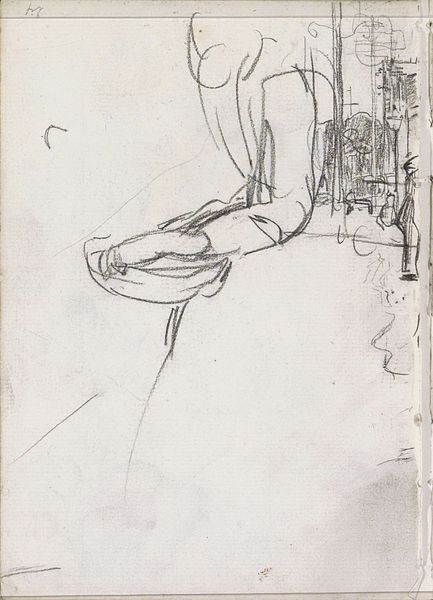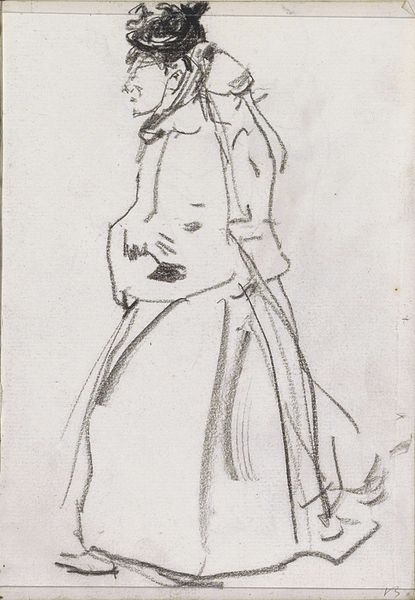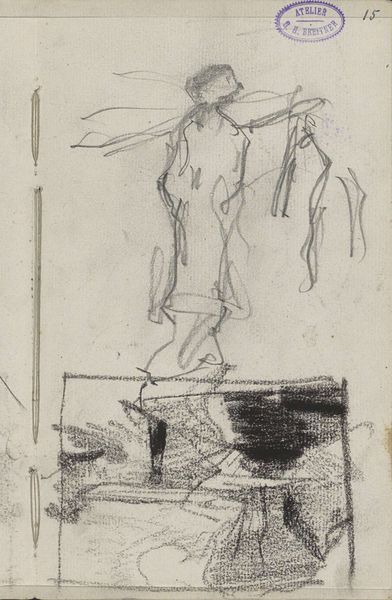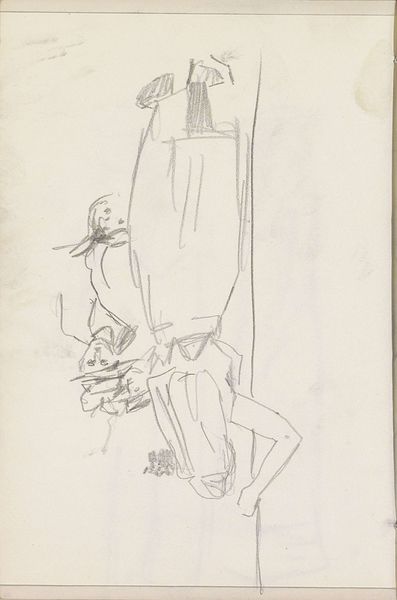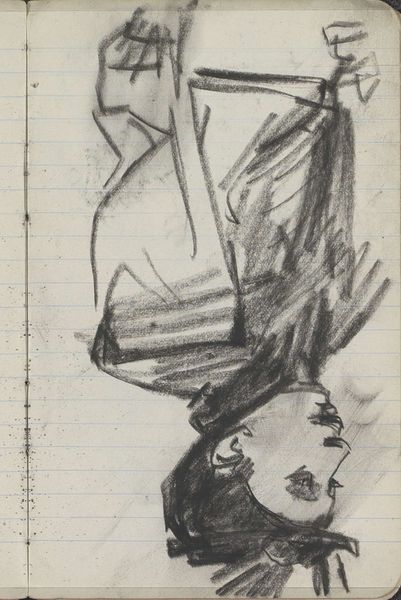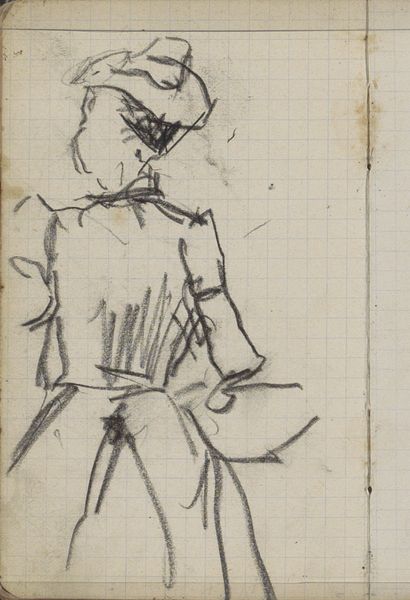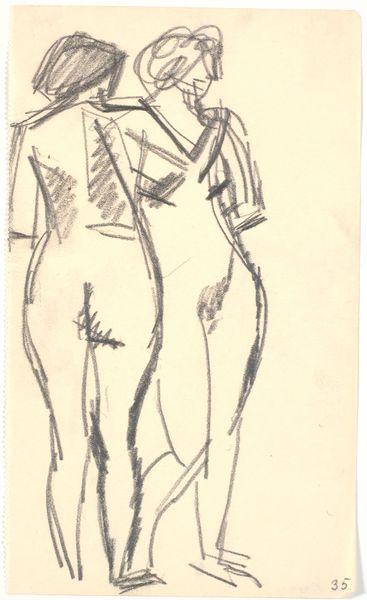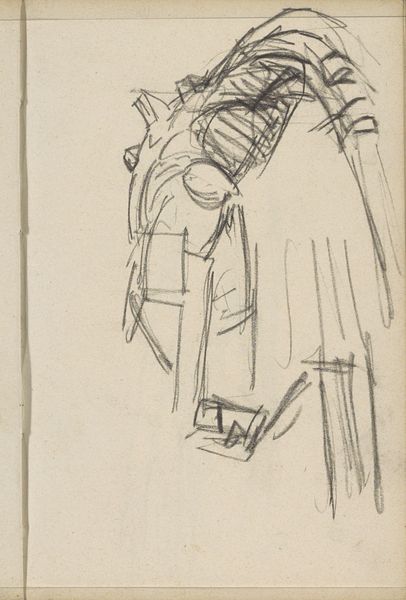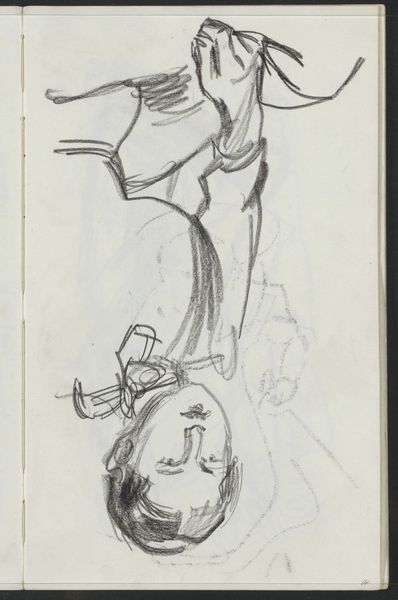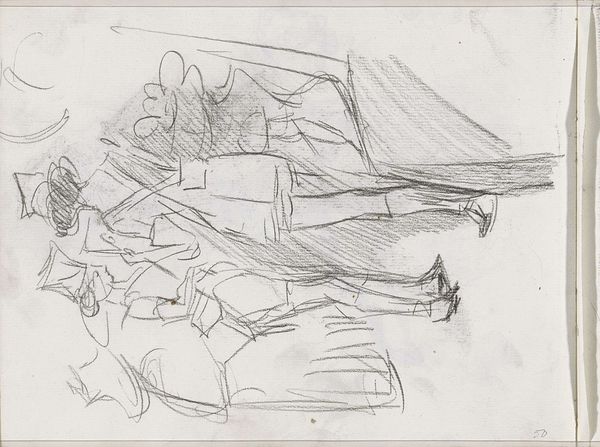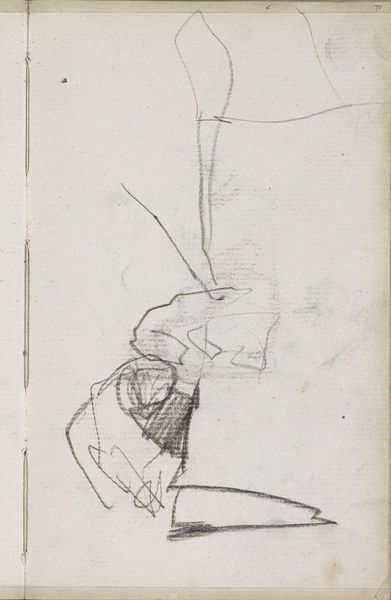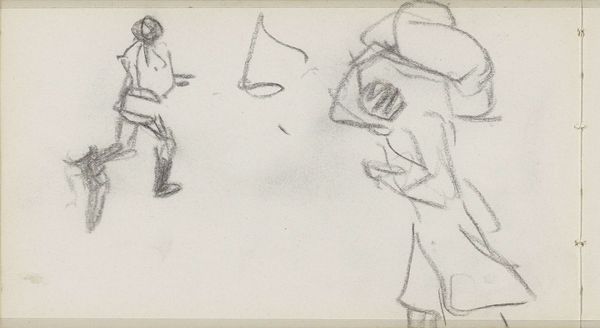
Copyright: Rijks Museum: Open Domain
Curator: This is "Vrouw en meisje, zittend," or "Woman and Girl, Seated," a pencil drawing by Isaac Israels, created sometime between 1875 and 1934. It's currently held in the Rijksmuseum. What strikes you about this sketch? Editor: It feels… immediate. Like a fleeting impression captured rapidly. The woman in the foreground, especially, has this sense of elegant disquiet. I wonder what circumstances surrounded its creation. Curator: There's a simplicity in the linework that feels revealing. The quick strokes aren't just descriptive; they convey something about the relationship between the figures. The woman’s turban-like headdress, for instance – it points to specific sartorial trends of the time but is also rendered in an almost abstract manner. It is a potent symbol. Editor: Absolutely. Consider Israels' broader social context. As an artist who often depicted everyday life, particularly of working-class women and girls, what story is subtly being told here? The almost hesitant posture of the younger figure, partially obscured, makes me wonder about social hierarchies and the representation of youth. Is she her daughter? Who knows. The title gives very little away! Curator: The way Israels renders the folds of the woman’s clothing creates a sense of depth, almost an architecture, which contrasts sharply with the more tentative lines outlining the girl. There’s an asymmetry in the portrayal that highlights their disparate roles and places them as a universal archetype. Editor: I agree. It's as though he is hinting at a commentary on the performative nature of motherhood and the subtle power dynamics in familial relationships, embedded in that almost hurried, provisional quality of the sketch. Even in its unfinished state, it tells so much. The writing around the main subject helps contextualise who is likely in this artwork. Curator: The suggestive nature of the lines is intriguing and compelling because it allows the viewer to enter into an active state of observation, even participation. Perhaps the names and locations also help ground the drawing with some historical references and contextual meaning? Editor: This work speaks to the way a simple sketch can hold complex emotions and sociocultural narratives. What seems like an impression becomes a powerful window into the past. Curator: Exactly, it’s more than just a quick study of figures, but the transmission of feeling, or a cultural residue of interactions we are not present for. It can trigger recognition. And perhaps a deep understanding.
Comments
No comments
Be the first to comment and join the conversation on the ultimate creative platform.
